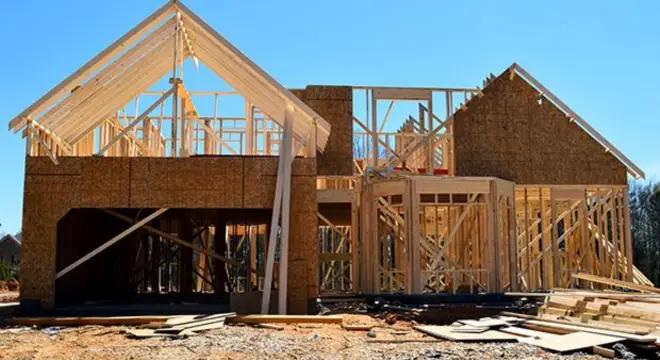Balloon Framing: Benefits, Drawbacks, and Why It Disappeared?
Did you know that a simple yet revolutionary construction technique helped shape the urban landscapes of the 19th century, but also exposed the risks of using lightweight materials in building design?
For instance, the infamous Hindenburg Disaster of 1937, although unrelated to balloon framing, highlighted the dangers of using flammable materials. The airship, made from lightweight materials, caught fire after a spark, resulting in the tragic deaths of 36 people.
Just as the Hindenburg tragedy served as a stark reminder of material safety, balloon framing in construction brought both remarkable benefits and significant risks. This method changed the way buildings were constructed, especially in rapidly growing cities like Chicago, making construction faster, cheaper, and more efficient.
Let’s explore how balloon framing revolutionized the building industry and its impact on modern architecture.
Brief History of Balloon Framing
Balloon framing was introduced in 1832 by George Snow, and it was first used to build a warehouse in Chicago. It was first used to construct a warehouse, marking the beginning of its use in the city. The method emerged out of necessity, as there was a scarcity of large timber and skilled labor during the time of Chicago’s rapid urban growth.
This technique allowed for faster construction with smaller, more readily available materials, making it a game-changer for builders.
As Chicago and other cities rapidly expanded, balloon framing became a critical part of the early urban construction boom in the United States. It became a cornerstone of wooden frame buildings, particularly in the 19th century, and played a key role in shaping the skyline of early American cities.
Advantages of Balloon Framing:
- Faster and easier construction: The design was simple, so buildings could be constructed quickly. It didn’t require highly skilled workers.
- Used smaller, more readily available wood: This method used smaller pieces of wood, which were not only easier to find but also more affordable.
- Strong and uniform structure: The long wooden studs ran continuously from the top to the bottom of the building, making the structure sturdy and balanced.
- Saved money and labor: Since it needed less expensive materials and fewer workers, the construction was cost-effective.
Disadvantages of Balloon Framing
While balloon framing offered many benefits, it had significant drawbacks that limited its long-term viable
- Fire Hazards: A major issue with balloon framing was its tendency to spread fires quickly. The long, continuous wooden studs created vertical channels inside the walls, acting like chimneys and allowing fire to move easily from one floor to the next.
- Structural Weakness: Over time, the long, continuous studs could become weak. They were prone to settling (shifting) or warping (bending), especially in taller buildings, making the structure less stable.
- Thermal Inefficiency: Since the walls had long, open spaces inside, they didn’t provide much insulation. This caused energy to escape easily, making the building harder to heat or cool, and increasing energy costs.
What is the balloon framing technique?
This construction method is called balloon framing. It involves long vertical wooden studs that run continuously from the foundation up to the roof. These studs are then nailed to horizontal beams or floor joists to create the floors. Unlike traditional construction methods, balloon framing uses nails to secure the parts together, instead of relying on complex wooden joints. This made balloon framing faster to build, but it also led to weaker joints over time

Why Did Balloon Framing Become Obsolete?
1. Fire Safety Concerns
Balloon framing posed significant fire risks. The continuous vertical wooden studs acted like chimneys, allowing fire to spread quickly between floors. Several urban fires revealed this dangerous flaw, making it clear that balloon framing was not safe enough for modern construction.
Facts: Chicago Fires: Early wooden construction in Chicago, including balloon-framed structures, contributed to the rapid spread of fires in the city’s history, underscoring the vulnerabilities of this method during large-scale urban blazes【19】.
2. Emergence of Platform Framing
Platform framing replaced balloon framing because it offered better fire safety and structural integrity. In platform framing, each floor is built separately, which prevents fire from traveling easily between floors.. In platform framing, each floor is built separately, acting as a natural barrier that prevents fire from traveling easily between levels. This method was safer and more stable, addressing the issues balloon framing had.
3. Building Code Changes
As fire safety became a higher priority, building codes were updated. By the mid-20th century, stricter codes made balloon framing less common. These new regulations discouraged or even banned balloon framing because of its fire hazards and structural weaknesses.
End of Balloon Framing
The decline of balloon framing began in the early 20th century, and by the 1940s–1950s, it was largely phased out.
There were two main reasons for this:
1. The Rise of Safer and More Efficient Construction Methods
New and safer construction methods, such as platform framing, replaced balloon framing. These new methods provided stronger, more fire-resistant buildings, making balloon framing less popular.
2. Advancements in Building Materials:
Improvements in building materials also made construction easier, quicker, and more durable. With these advancements, the need for balloon framing decreased.
Is Balloon Framing Common Today?
Today, balloon framing is very rare and is mostly found in old buildings. It is not used in modern construction because it has many disadvantages, such as fire risks and structural weaknesses.
Nowadays, builders prefer using safer and more efficient construction methods that are better than balloon framing.
Conclusion
Balloon framing was a crucial technique in shaping 19th-century construction. It revolutionized building practices, making construction faster and more efficient at the time. However, its major flaw, particularly the fire hazard, caused it to decline over time.
Today’s modern construction methods have learned from both the successes and failures of balloon framing. This has led to safer, more efficient designs like platform framing, which address the problems balloon framing faced while still providing efficient ways to build.



Exactly the the explanation I was looking for. Just noticing this ballon style after buying a1910 Rail yard home in the North West. I’m a 38 year electrician and guess I’ve never paid attention till it was mine to deal with. I’m surprised there’s not a hybrid or ballon style just for the first floor. With the floor joist tied to the stud the first floor seem stiffer and stronger. Just my opinion.
Hi Timothy,
Thank you for sharing your valuable experience and observations! It’s always great to hear from someone with such a strong background in the field. Your idea about a hybrid or modified balloon framing style for the first floor is intriguing and could indeed provide additional stability.
While balloon framing has largely been replaced by platform framing for safety and efficiency reasons, your point about tying floor joists to studs for added stiffness highlights an interesting possibility for modern adaptations.
I truly appreciate your insights and encourage you to share more of your expertise—your perspective adds so much to the discussion!
Best regards,
Robert Harris